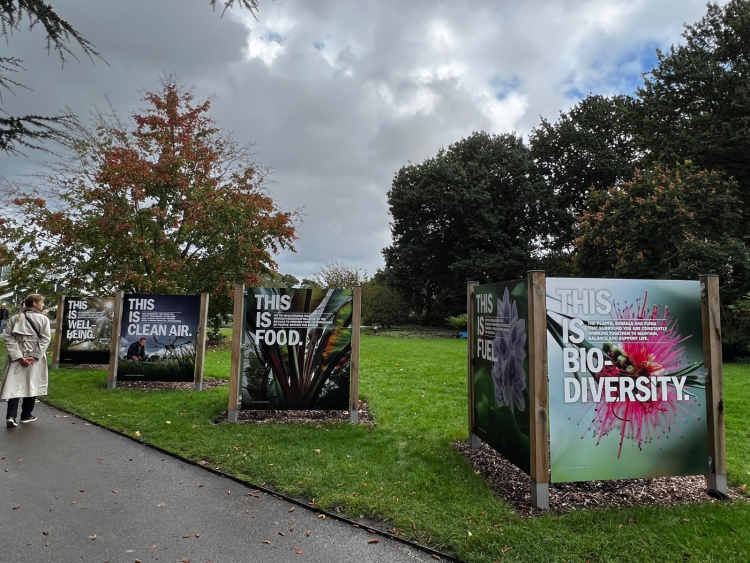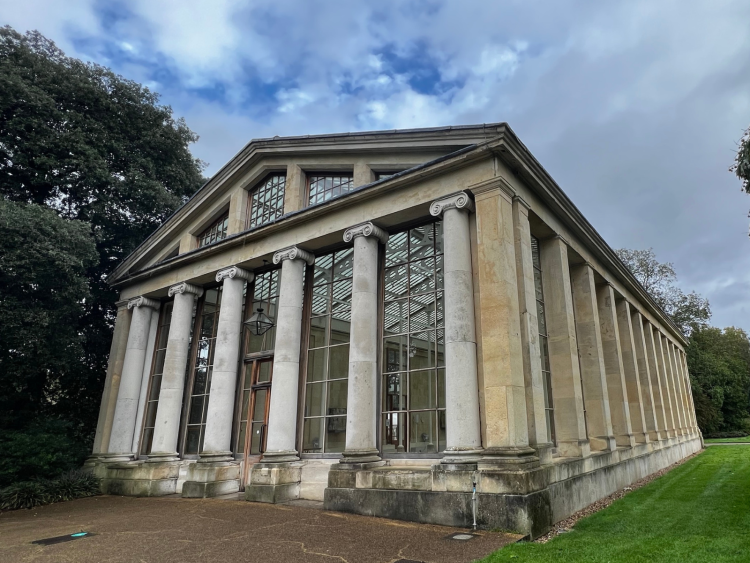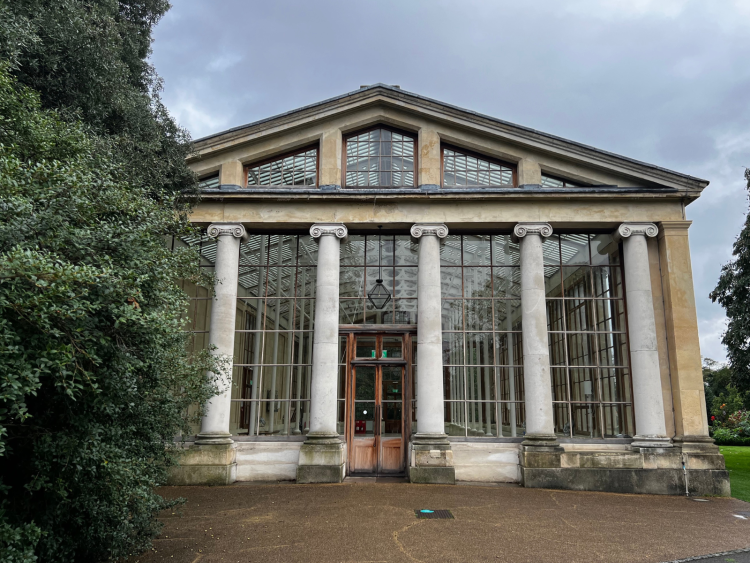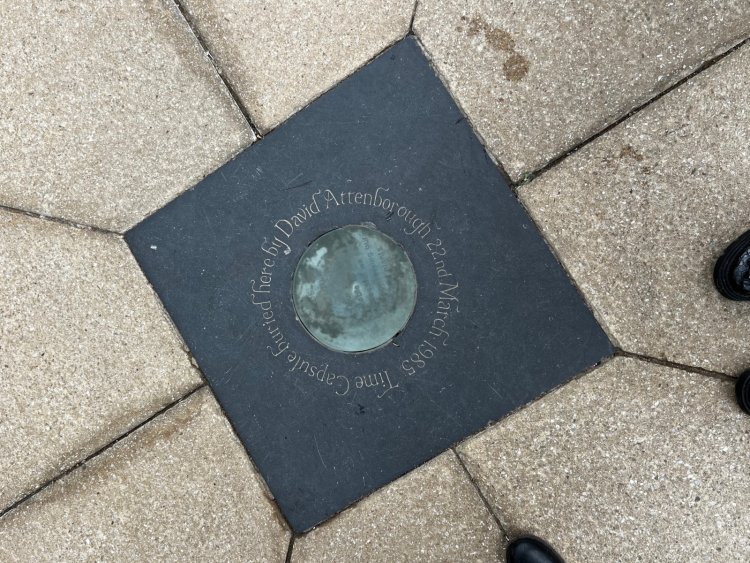Down the rabbit hole: an innovative approach to the climate crisis at the Royal Botanic Gardens, Kew
When Lewis Carroll wrote of Wonderland in 1865, his imagination created for us the intriguing and magical place of Wonderland.
Each time I visit a botanical garden, I like to imagine that I, like Alice, have fallen down the rabbit hole into Wonderland, and aim to explore the gardens around me as if I’d stepped into a fairytale myself.
It is easy to indulge in the feeling of a magical land when the diverse plant life on display is so different to what you see in your day-to-day life. The plants in each different greenhouse or garden look, feel and smell totally different to one another, playing a sensory homage to the places from which they originally came.
The Royal Botanic Gardens, Kew are no exception, and it was on a recent visit here that this feeling of having fallen down the rabbit hole returned…

Photo credit: Salix Finance
“Curiouser and curiouser…” about real solutions to the climate and biodiversity crisis
A recognised UNESCO World Heritage site, Kew Gardens houses the largest and most diverse botanical and mycological collection in the world. The plant life on site offers a rare glimpse into the diversity of life across planet Earth, and the different climate and conditions which support these plants to thrive.
Despite that prevalent ‘other-worldly’ feel, the plant life that exists at Kew Gardens is accompanied by a purely 'our-worldly' warning: the climate and biodiversity crisis is real, and we need to act urgently to tackle it.
One of the most important ways we can do this is by reducing our carbon emissions. However, what may come as a surprise is the fact that, even for a botanical garden, achieving carbon neutrality is no easy feat.
Despite the large collection of plants within their walls, even Kew Gardens has to adapt towards a lower-carbon future. In the face of this environmental crisis, Kew Gardens have set an advantageous goal to become not just carbon neutral, but ‘climate positive’ by 2030.
To be ‘climate positive’, Kew Gardens must surpass ‘net zero’ when it comes to carbon emissions, to remove additional carbon dioxide from the atmosphere, above and beyond what they emit.
Their intention to achieve this goal this was officially documented in early 2021 via their manifesto for change and sustainability strategy. Since the launch of these documents, there have been multiple projects of work in play that aim to reduce Kew’s carbon emissions.
Recently, I had the opportunity to see one of their completed decarbonisation projects at The Nash Conservatory in action, and to speak with the team at Kew about their journey to a climate positive 2030.

Photo credit: Salix Finance
“Every adventure requires a first step” – decarbonising The Nash Conservatory
Originally built on the grounds of Buckingham Palace in the early 17th century, the Nash Conservatory was moved brick-by-brick to the Kew Gardens in 1836.
Now a grade II historically-listed building, it is a popular site for events and weddings, and is the oldest of the 19th century glasshouses on site.
When the time came for the team at Kew Gardens to replace the two boilers that provide heat to the conservatory, they opted to take the opportunity to explore a lower-emission solution that would support their sustainability goals.

Photo credit: Salix Finance
“Imagination is the only weapon in the war with reality” – real solutions, imaginative approach
The lower-carbon solution for the Nash Conservatory was not so straightforward as one might think. An imaginative approach was required due to consenting constraints for estates on Crown-protected land, and further restrictions due to the historical significance and grading of the building itself.
The imaginative element came in the innovative approach to the installation of the low-carbon heating solution, an air source heat pump, which was introduced underground in a bespoke ventilation system that supported it to work correctly.
To complete the £447,348 of works, Kew Gardens was awarded £183,371 in funding, delivered by Salix Finance on behalf of the Department for Energy Security and Net Zero.
It is expected that the upgrades to The Nash Conservatory will reduce Kew Gardens’ carbon emissions by 30-32 tonnes annually.

Photo credit: Salix Finance
“It’s no use going back to yesterday, because I was a different person then” – lessons for the future
Director of the Royal Botanic Gardens, Kew Richard Deverell sums it up well in his forward in the strategy document: “The scientific evidence is clear: our planet faces twin crises of climate change and biodiversity loss, both caused by humanity. The risk is acute and current. Many of Earth’s natural systems, and the huge benefits they provide to humankind, are in the process of being disrupted, degraded and destroyed. The consequences for our planet, and humanity, are daunting.”
However, tackling climate change cannot be done in isolation, and Kew Gardens aim to use their voice, workforce and networks as a platform to call for the change needed to tackle the environmental emergency.
The Alice who fell down the rabbit hole into Wonderland was different than the one who climbed out. It is time that that we as people, too, should be different, or should aspire to be so in the face of the climate emergency that we face.
Will you go down the rabbit hole with us?
Project notes:
- Thank you to the Royal Botanic Gardens, Kew for hosting the Salix team and particular to Carl Dodd and Mark Jones for sharing their passion and expertise.
- The £447,348 project at the Nash Conservatory received £183,371 in funding under phase 3a of the Public Sector Decarbonisation Scheme.
- The new heating technology, an air source heat pump, replaced two old fossil fuel boilers to provide heat to the building.
- The project also incorporated heat retention measures via draught proofing with quattro seal, and the retrofitting of LED-lights to reduce electrical demand.
- There are multiple other decarbonisation projects going on at Kew, some of which have received further funding from latter phases of the Public Sector Decarbonisation Scheme.
- The Royal Botanic Gardens, Kew, are a recognised UNESCO World Heritage site with a mission to understand and protect plants and fungi for the wellbeing of people and the future of all life on Earth.
- The Nash Conservatory was originally built on the grounds of Buckingham Palace and moved brick-by-brick to Kew in 1836. Today, it is a highlight for many visitors to Kew, and is often used for exclusive events and weddings.
